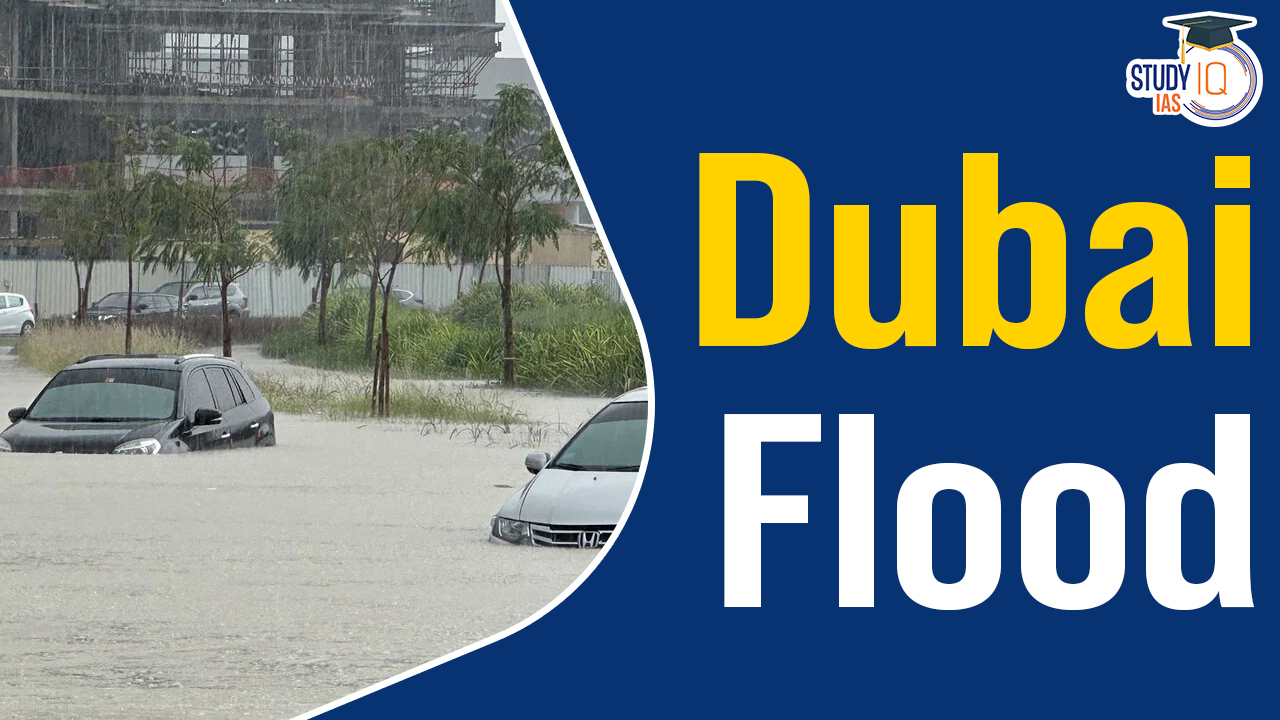Table of Contents
The recent heavy rainfall event in the United Arab Emirates (UAE), particularly in Dubai, marked a significant departure from the region’s typical arid climate. On April 15, 2024, a severe thunderstorm brought unprecedented levels of rainfall, causing widespread disruption and damage.
- Historic Weather Event: The rainfall recorded in the UAE was described as “historic” by the state-run WAM news agency, surpassing any documented rainfall since data collection began in 1949.
- Unusual Occurrence: Heavy rains are rare in the arid climate of the UAE, with such events typically occurring during cooler winter months.
Dubai Flood
The unprecedented heavy rainfall in Dubai on April 15, 2024, led to widespread flooding and disruption. With over 142 millimetres of rain falling in a short period, the desert city experienced a deluge rarely seen in its arid climate. Homes, roads, and major infrastructure were inundated, prompting closures of schools and businesses. The event underscored the challenges posed by extreme weather in the face of climate change.
Factors Contributing to Heavy Rainfall
- Storm System: A storm system passing through the Arabian Peninsula and Gulf of Oman played a significant role.
- Cloud Seeding: There are indications that cloud seeding, a weather modification technique, might have contributed to enhanced rainfall.
- Climate Change: Experts suggest that rising global temperatures, attributed to greenhouse gas emissions, may have intensified the event.
-
- Higher temperatures increase moisture in the atmosphere, potentially leading to more intense precipitation events.
- Studies in other arid regions like India’s Thar desert and Australia’s desert regions have shown similar trends of increased rainfall due to climate change.
- The UAE has witnessed a notable increase in average temperatures, likely influenced by global warming.
Dubai Flood: Implications of Climate Change
The heavy rainfall event in Dubai underscores the broader implications of climate change for the region and the world at large. Rising global temperatures, driven by greenhouse gas emissions, have the potential to magnify the frequency and intensity of extreme weather events such as heavy rainfall, droughts, and heat waves. The UAE’s vulnerability to such events highlights the urgent need for climate adaptation and mitigation measures to build resilience and safeguard against future impacts.
Role of Climate Change
- Global Warming: Some experts suggest that soaring global temperatures, caused by greenhouse gas emissions, may have intensified the rainfall event.
- Increased Moisture in the Atmosphere: Warmer temperatures lead to increased evaporation and moisture in the atmosphere, making storms more intense.
- Studies have found that for every 1 degree Celsius rise in average temperature, the atmosphere can hold about 7% more moisture.
- While the average global temperature on the Earth has increased by at least 1.1 degree Celsius since 1850, the UAE has witnessed an increase of almost 1.5 degree Celsius in the past 60 years.
Conclusion
In conclusion, the heavy rainfall event in Dubai serves as a poignant reminder of the complex interplay between natural weather phenomena and human-induced climate change. While specific attribution of individual events to climate change remains challenging, the overarching trend of increasing temperatures and extreme weather events necessitates proactive action. By understanding the factors driving heavy rainfall and its implications, stakeholders can work towards implementing strategies to mitigate risks and foster sustainable development in the face of a changing climate.


 SSC MTS Salary 2025, Check Highest Salar...
SSC MTS Salary 2025, Check Highest Salar...





















